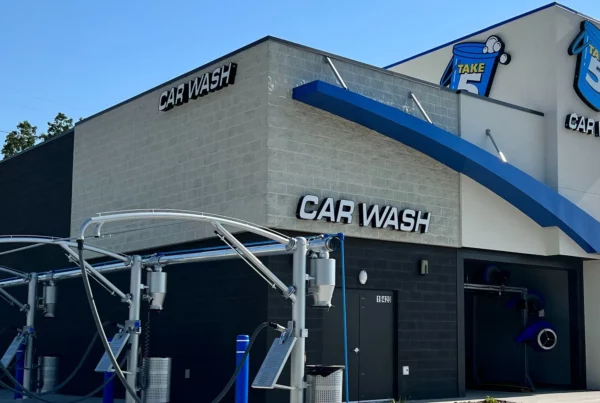Learn These 5 Insurance Clauses, OR You’ll Regret it When Renovating In NYC
4/25/2018
Insuring your building is often something else added to the “to do” list for owners. When renovations are involved the details become much more important. This month, I asked Marc Fells to dive into this topic.
Lets hear from Marc….
Renovation is inherently risky. Property owners are exposed to significant liability both during and after a renovation project. There’s liability related to the physical property, and there’s also liability related to the contractors performing the renovation.
How can owners best manage liability and reduce risk through renovation projects? Some mistakenly think the risk lies solely with the contractors working on the project and that the owner has no potential for liability. That is not the case, and it’s important for owners to recognize and manage their risk at the outset of renovation work.
Here’s a look at why owners need independent insurance, as well as the 5 critical factors to consider when owners explore insurance options.
1. Look for Exclusionary Language
Many think that insuring the building is easy. After all, it should be relatively straightforward to value the building before and after construction, as well as the economic value of the work completed and the time it takes to complete that work.
But insuring a building for construction is not that easy. Some insurance policies include exclusionary language related to construction and renovation that can cause problems if and when a claim arises.
For that reason, you need to find an experienced advisor who can help you avoid the exclusionary language that can cause problems in certain situations, limiting your risk and enhancing your protection.
2. A Contractor’s Certificate of Insurance is Meaningless
Take no comfort in your contractor’s certificate of insurance. The only information the certificate includes is the carrier’s name and the policy’s limits. As noted above, many policies include important language that can put owners at greater risk, and this language is not included on the certificate of insurance.
New York has some of the strictest labor laws in the nation. If a worker is injured on your property and the insurance policy includes injury exclusions, you’re suddenly exposed to significant liability.
To avoid making a mistake with costly ramifications, review the contractor’s entire insurance policy. Reading the full policy will let you know of existing gaps that expose you to liability — and give you the opportunity to request additional coverage or to fill those gaps yourself.
[ctt link=”R32CP” template=”1″] There is no substitute for reading a policy. [/ctt]3. Understand Contractual Risk Transfer
What is risk transfer? Simply put, it is the shifting of pure risk from one party to another. For example, when you purchase an insurance policy, you’re shifting pure risk from yourself to the insurer in exchange for the payment of premiums — a classic example of risk transfer.
But there are other ways to transfer risk without getting your own insurance policy. You may arrange for status as an Additional Insured on the contractor’s policy, which shifts your pure risk onto the contractor’s insurer (assuming you’ve read the full policy and confirmed there are no exclusions).
To make sure you are properly transferring risk, do the following 2 things anytime you hire someone to work in your building, whether for routine maintenance or renovation:
- Have a contract with all parties that indemnifies you as the owner and holds you harmless.
- Have a contract that outlines what coverage and limits the contractor must have in place for the work performed.
Taking these 2 actions is essential to properly transferring risk and ensuring carriers cannot deny coverage in the case of a claim.
4. Don’t Rely on Additional Insured Status and Hold Harmless Provisions
When you’re trying to reduce your risk, you may encounter 2 aforementioned provisions: Additional Insured status and Hold Harmless provisions. While these are good statuses to have, they alone are not sufficient to fully limit your liability.
Additional Insured status is when a party is added to an existing policy at the request of the initial policyholder. Any party not automatically insured by a policy may be added in certain cases as an Additional Insured party.
Hold Harmless status is an agreement between two parties to limit one party’s (or both parties’) liability. In short, a Hold Harmless agreement prevents the protected party from liability related to a future and unforeseen incident.
But Additional Insured Status and Hold Harmless agreements are not always sufficient to protect you as a property owner. It’s important that you conduct an upfront risk review and analysis prior to work commencing. Such a review and analysis should indicate whether or not you need an independent policy to fill any gaps in risk protection.
5. Why to Get Extended Completed Operations Coverage
Most commercial general liability policies expire at the end of a term that matches the expected timeline of a project. But not all risk and liability expires along that same timeline. For example, a defect in construction may lead to risk that does not emerge for years after the expiration of the commercial general liability policy.
You should always seek extended completed operations coverage, which can often be added to the owner’s or contractor’s policies. Extended completed operations coverage provides protection well into the future against risk or liability that is not apparent at the end of a construction or renovation project.
For example, a commercial general liability policy may cover an owner or contractor for 24 months on a project that is expected to require 2 years or less for completion. But extended completed operations coverage may extend protection for 10 years or some other length of time.
As a best practice, seek extended completed operations coverage that matches your home state’s statute of repose timeframe for suits against the owner for completed work.
You Dont Need it Until You Do
Determining the right insurance for yourself and your contractor involves many moving parts. This is a critical part of the process and should take place before contracts have been signed. A significant number of contractors don’t carry proper insurance coverage and often have exclusionary wording that could have a dire impact on a project, potentially leading to long delays and causing negative financial impacts.
Marc Fells is an insurance professional specializing in risk management for property managers, real estate owners and developers. Marc draws upon his extensive experience in risk management as it pertains to an array of real estate transactions to help clients navigate the life cycle of a real estate deal — including acquisition, development, construction and disposition. Marc works with Rampart Insurance Services based in Lake Success, NY. Rampart is one of the Tristate area’s largest privately held independent, full-service insurance brokerages with over 200 Employees. Marc can be reached at mfells@rampartinsurance.com or (516)390-3856.
facebook LinkedIn Instagram Twitter




